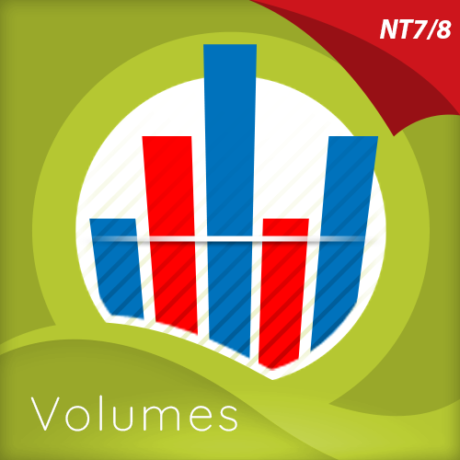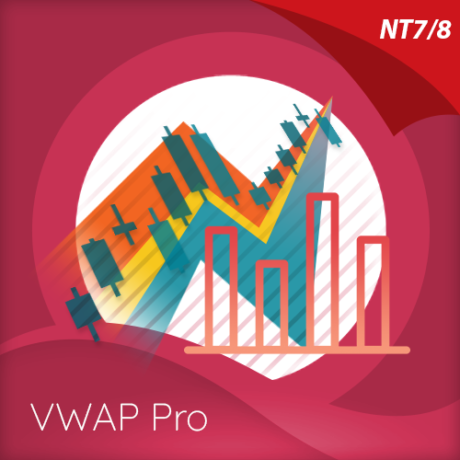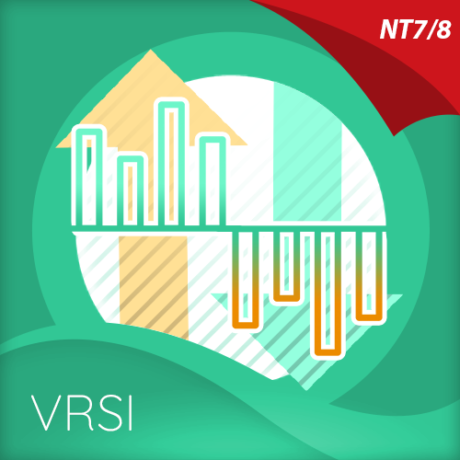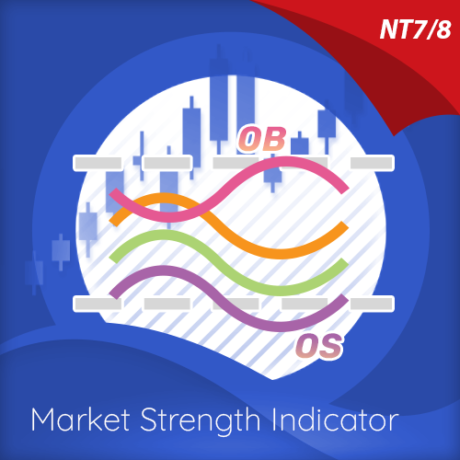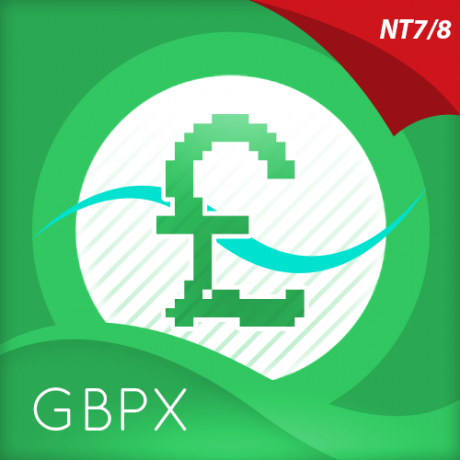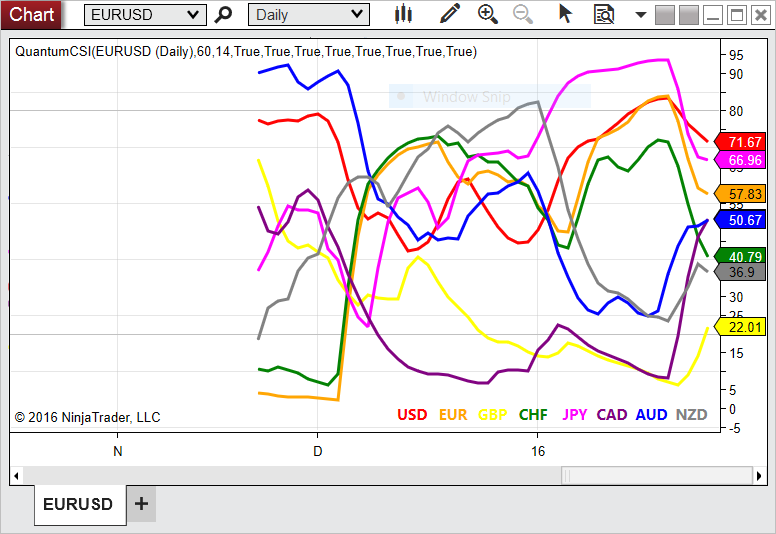
General – getting started
The Quantum Currency Strength Indicator has been designed to show you easily and quickly when a currency is moving strongly in one direction or another, either to an oversold state, or to an overbought state. Currencies and currency pairs move constantly from one to the other in all timeframes.
These are the points at which a currency is likely to reverse and change trend. The overbought and oversold regions on the indicator are defined by the solid grey lines at 20 and 80, and once these regions are approached then this is a signal for further analysis on the chart. Using the currency strength indicator on Ninjatrader in multiple timeframes is an excellent way to see whether a currency is rising or falling across several timeframes, adding a further dimension to your analysis, and allowing you to quantify the risk on any trade in a more detailed way.
Whilst this Ninjatrader indicator has been designed to show you when currencies are potentially overbought or oversold, the Quantum Currency Strength Indicator will also show you when currencies are in congestion phases as they meander and bunch together. Typically this is seen ahead of major news releases as the currency markets pause and wait before the release.
Finally, the indicator will also help you to monitor current positions, with the indicator showing you when a currency has moved from one extreme to another and perhaps signalling a potential reversal in the opposite direction.
- Your Quantum CSI currency strength indicator can be applied to any chart for any currency pair. The chart does not influence or affect the appearance or performance of the indicator. For example you can apply the indicator to a GBPUSD, a EURUSD, or a USDCHF, or any other pair. The indicator will display in an identical way on each chart.
- The indicator will work in all timeframes from seconds, to minutes, hours and months on the Ninjatrader platform
- When you first apply the indicator, please allow a few seconds for the data to build in history.
- The solid grey lines at the top and bottom of the indicator (80 at the top) and (20 at the bottom) are not designed as an entry or exit signal. They are simply there to give a guide as to when a currency is approaching or moving into an oversold or overbought region, in that timeframe.
Installation
Open NinjaTrader 8 platform and select a chart.
Right click the chart to bring up a menu which looks like the following image:
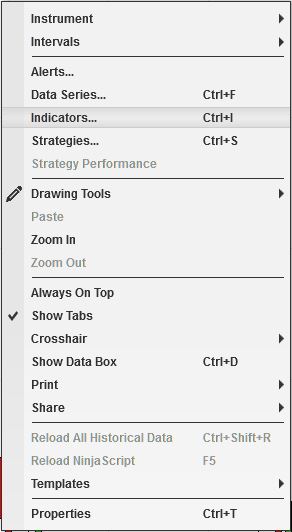
Select Indicators… which will open the following window. (Alternatively, you can open this window by clicking the indicators button in the chart toolbar or by pressing Ctrl + I while focused on the chart)
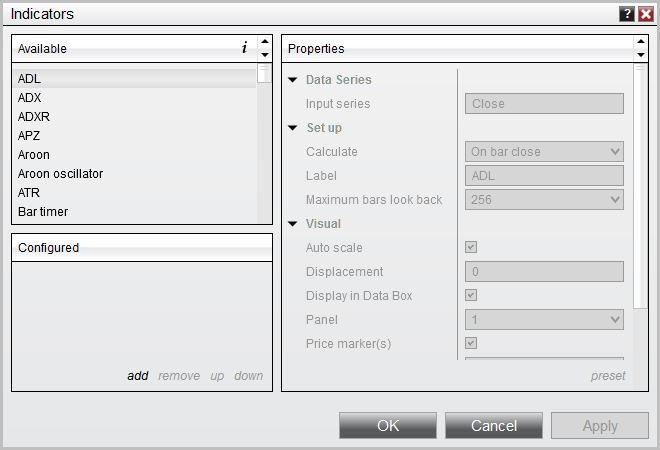
In the Indicator window, scroll down to the QuantumCSI indicator and click it to select the indicator. Once selected, click add in the Configured frame which will put it on the list of active indicators to be added in the chart.
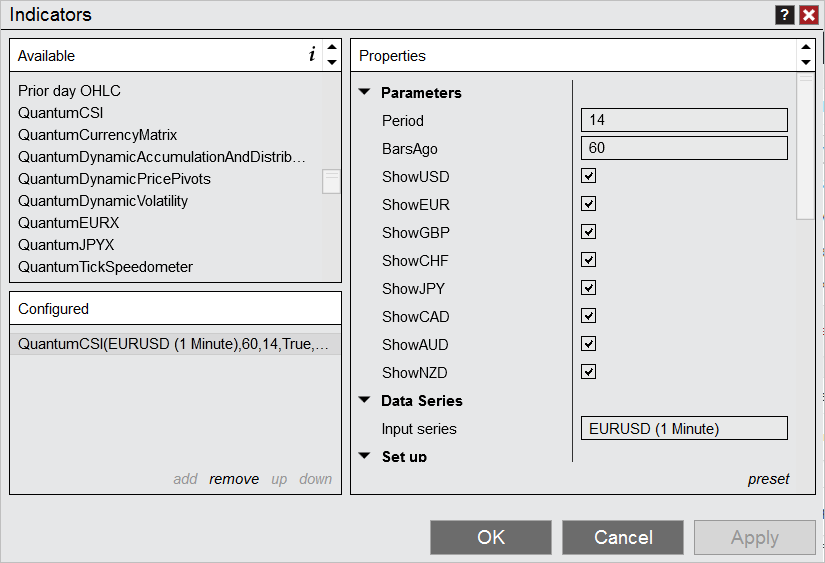
Before clicking the OK or Apply button to complete, the indicator has a number of options which can be configured. You can click the Apply button at any time, and this will apply any changes you have made to the indicator without closing the window. This will allow you to see the changes you have made to the indicator, without closing with the OK button, or the Close button.
Configuration
All of the user configuration is down on the right hand side of the indicator window. These are the default setting when you first install the indicator to a chart.
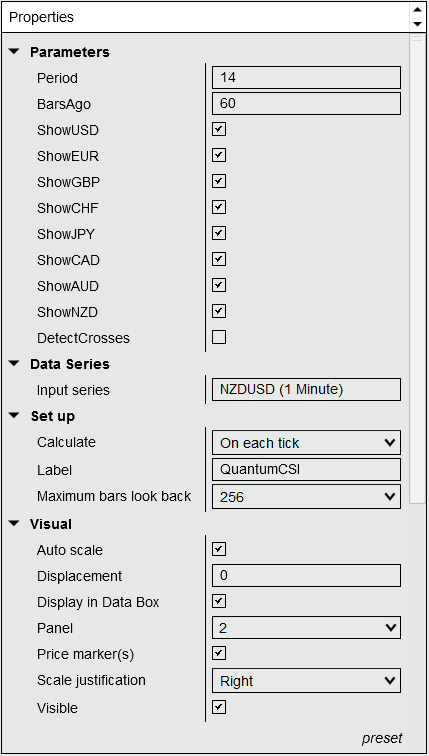
Parameters
These are the Parameters inputs:
BarsAgo – this is the number of bars that the indicator processes during the calculation. The CSI requires a significant amount of processing power compared to most indicators, and this is the recommended setting. The higher the setting then the more processing power is required and we suggest it remains at 60, although you can change this if you wish.
Period – this setting is used to ‘fine tune’ the internal RSI of the currency strength indicator. Increasing the value makes the indicator less responsive to price movement, thus the steepness of the curves decrease. A higher Period also means that currencies are less likely to cross the 80 and 20 lines. Conversely, decreasing it, makes the indicator more responsive to price movement, thus the steepness of the curves increase. A lower Period also means that currencies are more likely to cross the 80 and 20 lines and also stay there for longer periods of time. The recommended settings are between a minimum of 7 and a maximum of 14. For medium to longer term trading approaches then the higher Period is recommended (towards 14 or above), whilst for faster scalping trading approaches, then a lower Period can be applied (towards 7 or below). To change the setting:
ShowUSD – allows you to hide/show the USD currency line by clicking the checkbox on/off
ShowEUR – allows you to hide/show the EUR currency line by clicking the checkbox on/off
ShowGBP – allows you to hide/show the GBP currency line by clicking the checkbox on/off
ShowCHF – allows you to hide/show the CHF currency line by clicking the checkbox on/off
ShowJPY – allows you to hide/show the JPY currency line by clicking the checkbox on/off
ShowCAD – allows you to hide/show the CAD currency line by clicking the checkbox on/off
ShowAUD – allows you to hide/show the AUD currency line by clicking the checkbox on/off
ShowNZD – allows you to hide/show the NZD currency line by clicking the checkbox on/off
DetectCrosses – A new feature that we have introduced in the Currency Strength Indicator for NinjaTrader 8 is an alert system for currency crosses which has been requested by some of our customers who are interested in taking advantage of trading opportunities found at such points. A currency cross happens when one currency line intersects with another which indicates a significant price action between the two currencies, and signals the development of a trend which is already in place.
It is set to false by default but when changed to true, you will be prompted through the NinjaTrader Alert window about all the currencies that have crossed.
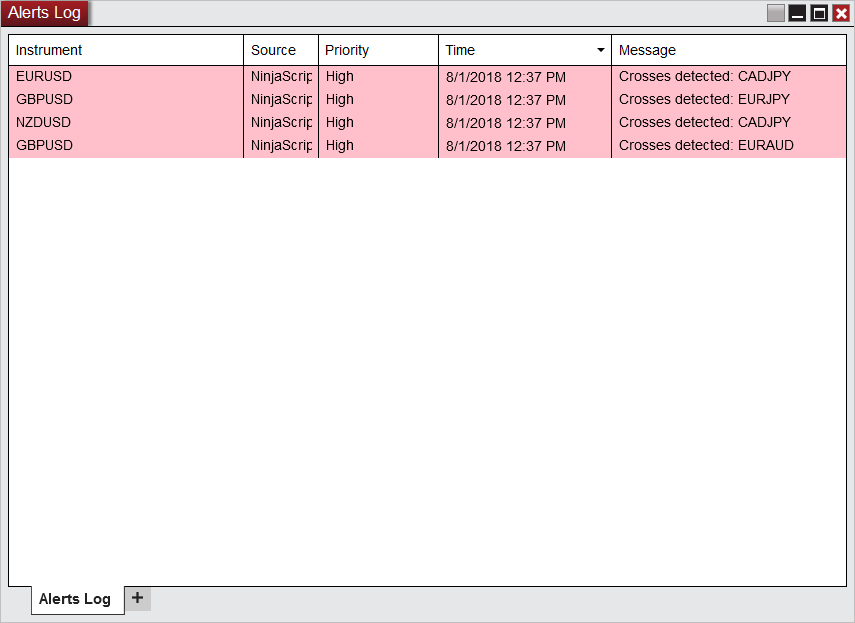
Data Series
Input series – this shows the timeframe for the indicator and will be displayed according to the chart time. In this case the indicator was attached to a 5 minute time chart
Set up
Calculate – please DO NOT change this setting and leave as the default of On each tick
Label – there is no need to change the value of this configuration
Maximum bars look back – this is the maximum number of bars in the look back for the indicator. We suggest you leave this as the default of 256 as it is memory friendly
Visual
These are the Visual inputs:
Auto Scale – DO NOT change this setting and leave this as the default of True
Displacement – DO NOT change this setting and leave this at the default of 0
Display in Data Box – we suggest you leave this at the default of True (checked)
Panel – this specifies the panel number where the indicator will appear. We suggest you leave this as the default of 2
Price Marker(s) – please DO NOT alter this setting and leave as the default of True (checked)
Scale Justification – please DO NOT alter this setting and leave as the default of Right
Visible – hides or shows the entire indicator on the chart. Please leave it checked to remain visible.
Lines
These are the two lines which define the oversold and overbought regions on the indicator. The default settings are 80 and 20, but you can move these levels higher or lower if you prefer. There are several settings which you can change here, both in terms of the location of these lines and in the color and style.
- Overbought – refers to the horizontal line at the top of the indicator with a value set to 80
- Oversold – refers to the horizontal line at the bottom of the indicator with a value set to 20
A list of line styles or properties will be shown to you by clicking the arrow graphic beside the line for you to customize the appearance of the plot to your liking:
- Color – default is Silver
- Dash style – default is Solid
- Name – they are named Overbought and Oversold respectively
- Value – Overbought’s Value is set to 80 and Oversold’s Value is set to 20
- Width – default is 1
Plots
This is where you can change the various properties of the indicator’s plots:
- USD – represents the USD currency line (default color is Red)
- EUR – represents the EUR currency line (default color is Orange)
- GBP – represents the GBP currency line (default color is Yellow)
- CHF – represents the CHF currency line (default color is Green)
- JPY – represents the JPY currency line (default color is Magenta)
- CAD – represents the CAD currency line (default color is Purple)
- AUD – represents the AUD currency line (default color is Blue)
- NZD – represents the NZD currency line (default color is Gray)
A list of plot styles or properties will be shown to you by clicking the arrow graphic beside the plot for you to customize the appearance of the plot to you rliking:
- Color – each currency line has an assigned color (please see above)
- Dash style – default is Solid
- Plot style – default is Line
- Width – default is 3
Once you have made changes to the settings for the QuantumCSI, left click the OK button to complete and update the indicator.
Removing the indicator
These are the steps to remove the indicator from the chart.
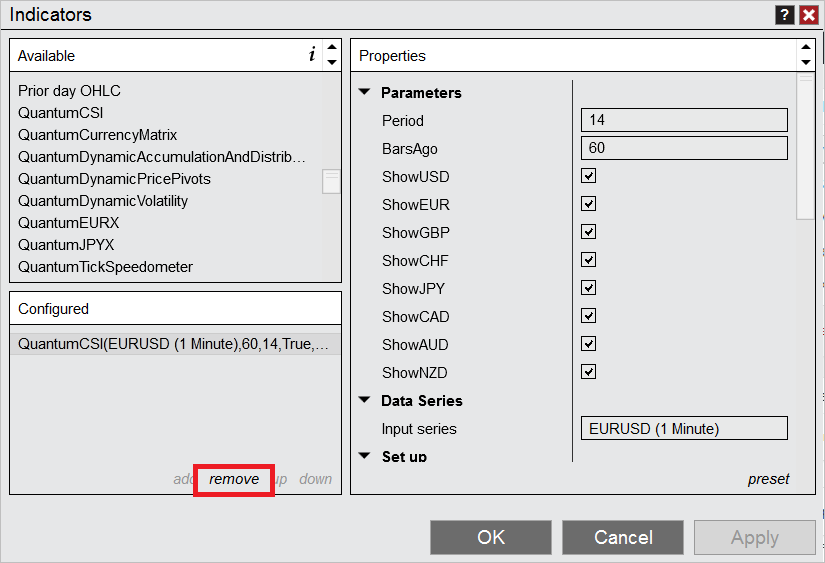
Right click on the chart then select Indicators from the menu. Select QuantumCSI from the Configured frame and click remove. Click OK to confirm and the indicator should be unloaded from your chart.



